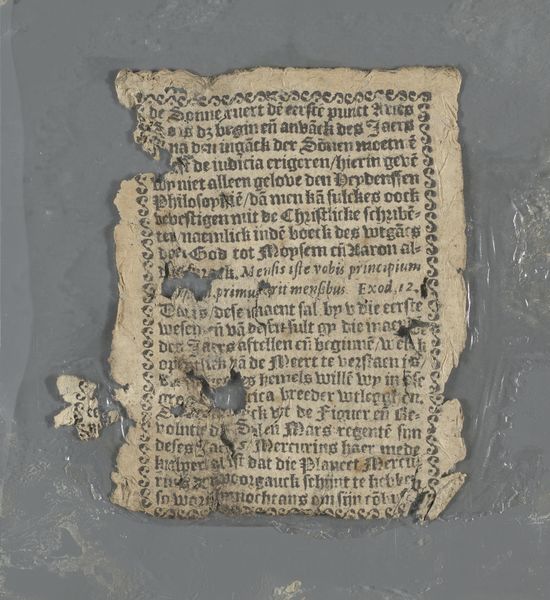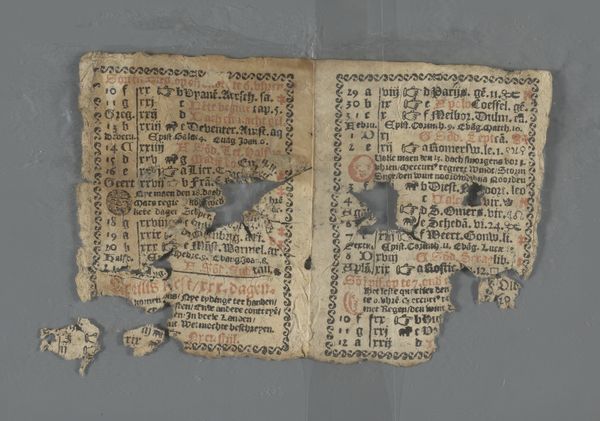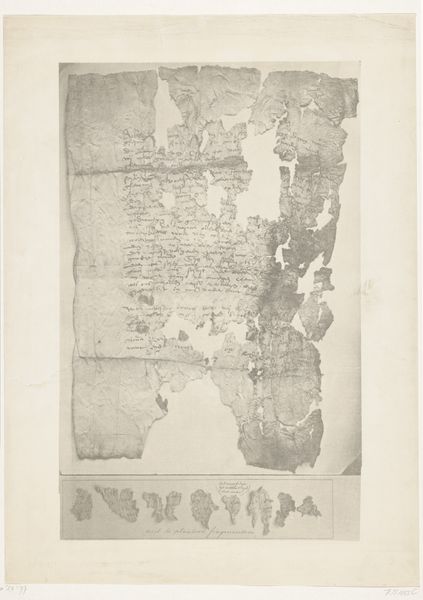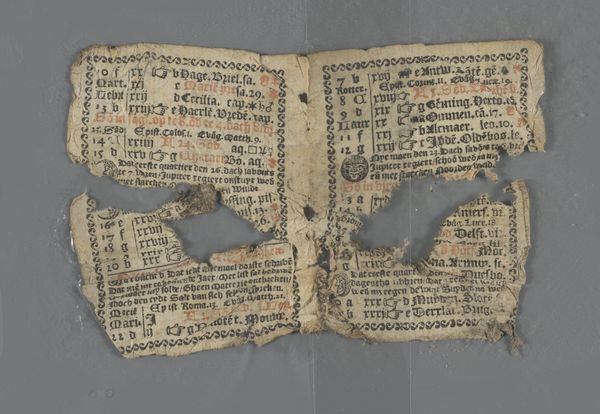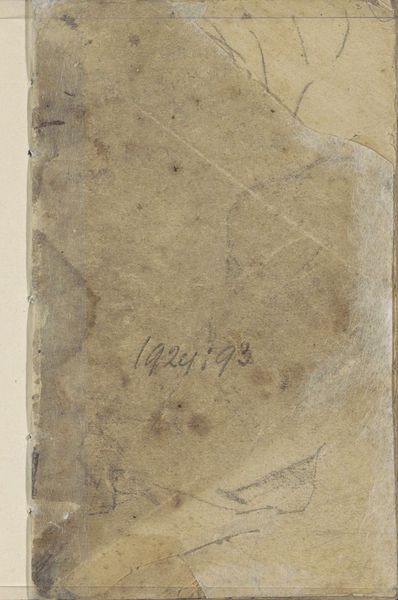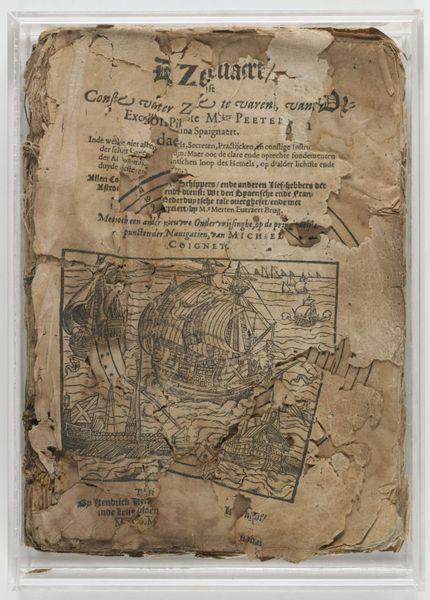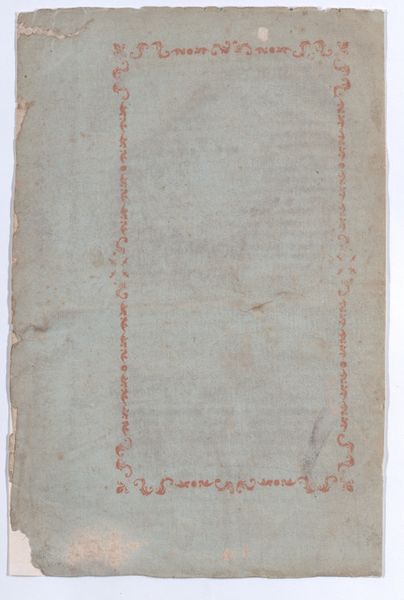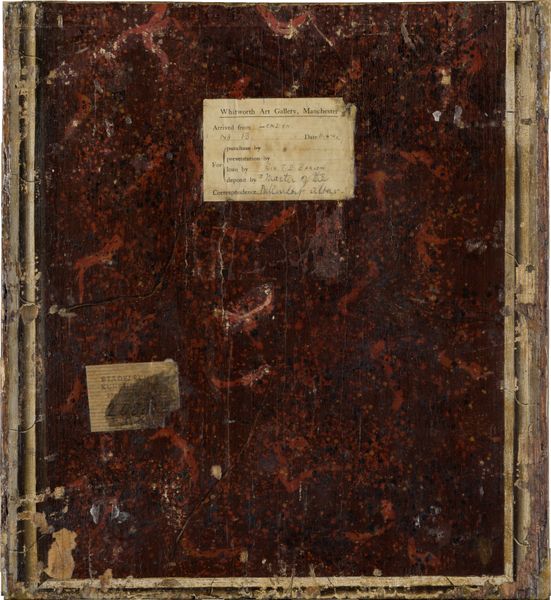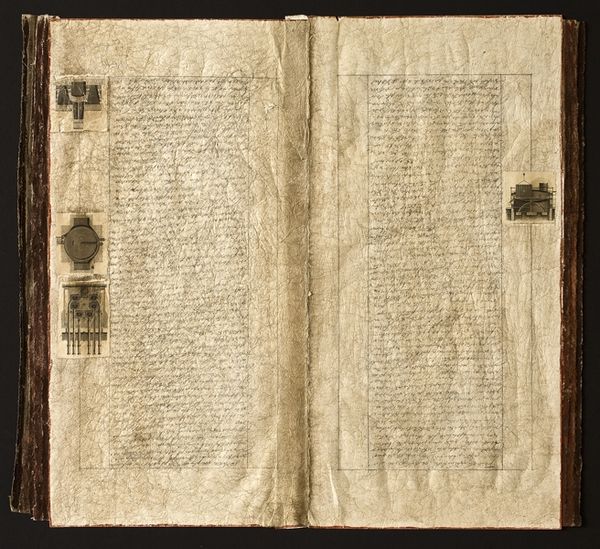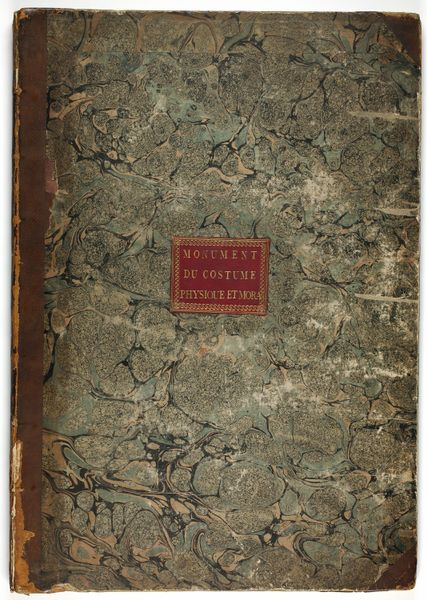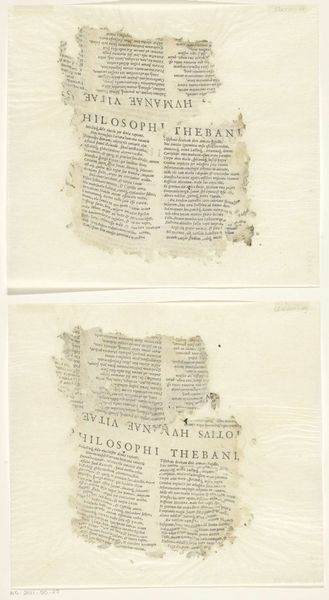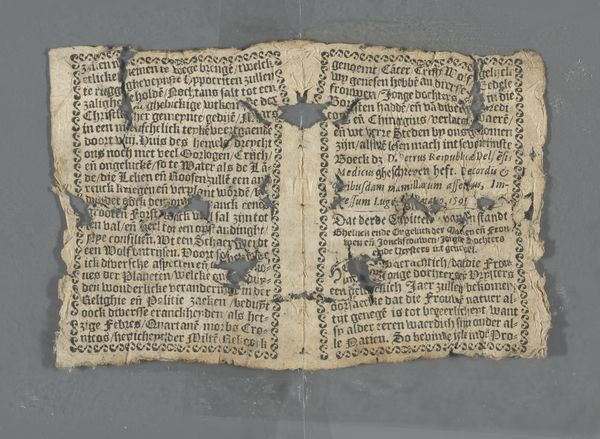
Liederenboek, getiteld; "Een syverlyck Boecxken begrijpende alle die Gheestelyke Liedekens ghemaeckt eertijts bij de salighe Tonis Harmansz van Warvershoef..." c. 1590 - 1596
0:00
0:00
drawing, print, paper, ink
#
drawing
#
medieval
# print
#
paper
#
ink
Dimensions: height 15.6 cm, width 9.8 cm, depth 0.7 cm
Copyright: Rijks Museum: Open Domain
Curator: This object is a fragment of a songbook dating back to around 1590-1596. It's attributed to Tonis Harmensz van Warvershoef. We believe it's made using ink and drawing on paper, with a print also incorporated. Editor: My first thought is that it's in such a state of ruin. Despite this, there's a sense of history embedded in the surviving marks; its survival feels almost miraculous. Curator: Absolutely. The degradation speaks to its use, its handling, its very material life. Who made the paper? What inks were available? How was the printmaking managed, what was the mode of publication and the book trade like then? All these elements played a part in the form we see now, it reminds us that the physical object is never neutral. Editor: And look at the visual elements: despite the damage, you can discern a detailed scene beneath the text, a dense composition of figures. They must hold some significance linked to the songs within. It feels like a window into the beliefs of the time. Are these familiar biblical or allegorical figures? Curator: Indeed. Iconographically, the figures would've resonated deeply with the intended audience. Perhaps they illustrate specific virtues or moral lessons connected to the songs, serving as a visual aid to faith and understanding. It highlights the power of images in early printed materials. The selection of figures suggests much about the priorities and the socio-political contexts in the late 16th century in the low countries. Editor: It makes you wonder who owned this book. Did they cherish it? Did its message bring comfort or strength? Curator: Precisely, a materialist analysis alongside an understanding of its symbolism can teach us much about society in general, revealing popular attitudes that might be underrepresented in elite historical accounts. Editor: A beautiful, if fragile, reminder of art's capacity to connect us across time and circumstance. Curator: Yes, the way it persists in fragments helps us see it more clearly as a site of complex forces rather than just a delivery method of particular aesthetics.
Comments
No comments
Be the first to comment and join the conversation on the ultimate creative platform.
